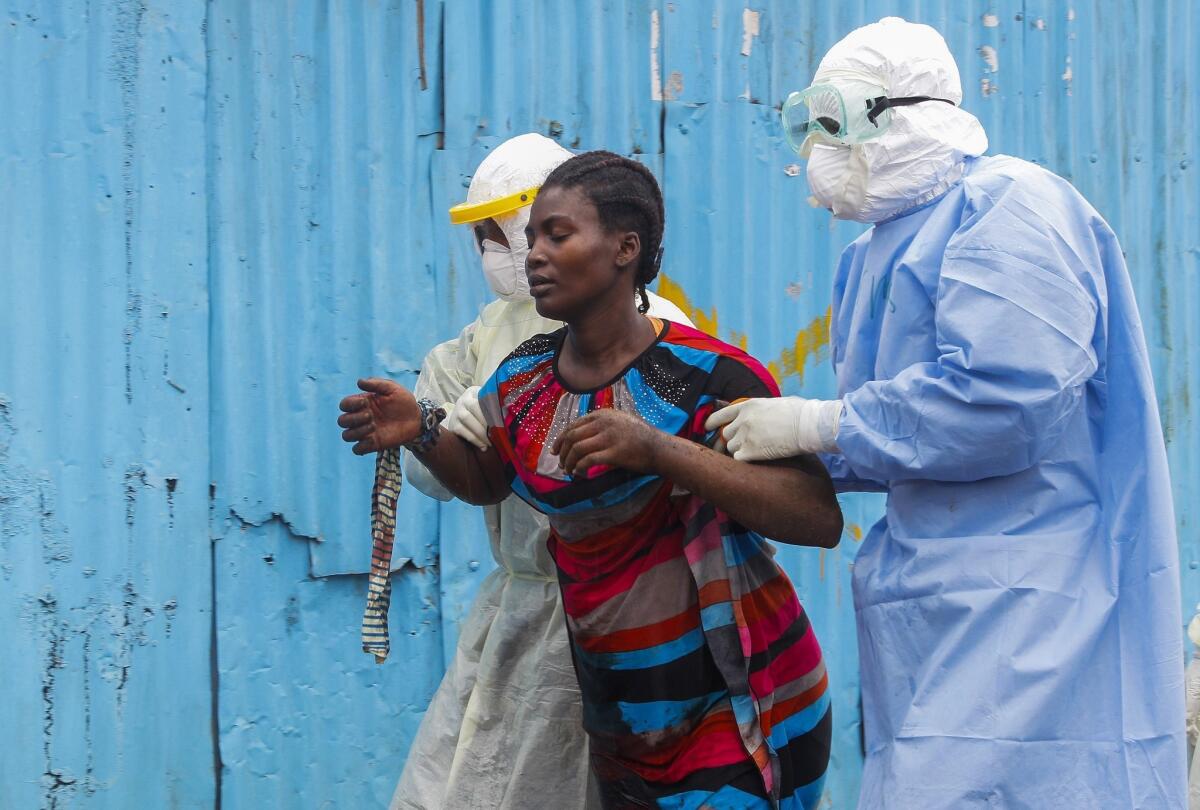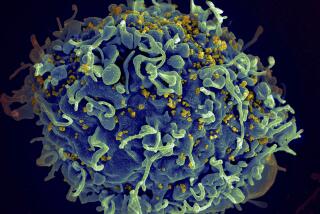CDC study offers sharply differing forecasts for Ebola epidemic

- Share via
Researchers offered two starkly differing forecasts for the future of West Africa on Tuesday, estimating that the Ebola epidemic could either be snuffed out by the end of January, or swell to more than 1.4 million cases, depending on the world’s response.
In a paper published Tuesday, researchers at the U.S. Centers for Disease Control and Prevention presented a computer model for the epidemic that calculates how rapidly the disease will spread, based on how much effort is made to control the crisis.
The model shows that a surge of resources unleashed now “can break the back of the epidemic,” said Dr. Tom Frieden, director of the CDC. “It also shows that there are severe costs of delay.”
The model, which is based only on statistics from Sierra Leone and Liberia -- data from Guinea, the outbreak’s other hot spot, was too unreliable -- estimated that the two nations could experience between 550,000 and 1.4 million new cases of Ebola by January 2015 if no action were taken to stem the spread.
However, Frieden said that those estimates were based on data that were three weeks old, and that the U.S. and other nations have already begun ramping up efforts to treat and isolate the illness.
“We don’t think that will come to pass,” Frieden said of the worst-case estimate. “These are not projections. What we’ve done is outline what might happen in different scenarios.”
In sharp contrast, the model estimated that if 70% of patients were properly isolated in a hospital, home or community setting, and safe burial practices were instituted, “the epidemic in both countries would almost be ended by January 20, 2015,” the report concluded.
Ebola is spread through contact with bodily fluids, and a traditional practice of washing or embracing the dead has been a key element in the spread of the disease. Likewise, a lack of hospital treatment facilities has hampered efforts to isolate infected patients.
“If you get enough people effectively isolated, the epidemic can be stopped,” Frieden said.
Study authors said the need for new Ebola treatment units, or ETUs, was critical.
“The existing capacity of ETUs to admit patients with Ebola is insufficient to stem the estimated increases in cases,” authors wrote.
The latest official numbers released Monday by the World Health Organization put the total number of suspected and confirmed Ebola deaths in West Africa at 2,811 and the total number of cases at 5,864. Liberia and Sierra Leone make up the vast majority, or 4,835, of those cases.
The World Health Organization also released new estimates warning of a rise in cases if stronger efforts to contain the disease are not employed.
According to an article in the New England Journal of Medicine published Tuesday, the number of cases in Guinea, Liberia and Sierra Leone could rise to more than 20,000 in six weeks.








